You don’t need me to tell you that the best photography happens in the best light. It’s the reason we photographers go to such great lengths to be in the right place at the right time, dragging ourselves out of bed in the middle of the night to be at the top of a mountain when the sun comes up, or staying out late to shoot frames well past sunset, when you’re cold, hungry, and tired. That’s when the magic happens. It means embracing discomfort and chasing light.
Shooting at night is the complete opposite. You’re no longer chasing light, but finding ways to create it. You’re bringing in artificial light sources and painting with it on a black canvas. When I’m out creating pictures at night, I think back to one of the most memorable winter seasons of my career when I spent 10 days living on a portaledge on El Capitan. I was documenting my good friends Tommy Caldwell and Kevin Jorgeson as they completed the first free ascent of the Dawn Wall.
It was late December, crossing into January 2015. The daytime temps on the south-facing El Capitan were unbelievably warm, like we were baking ourselves in a solar oven. When the sun set, however, it dropped to freezing. Meltwater atop El Cap formed 20-foot daggers of ice over night. Then, when first light hit, the icicles thawed and detached and rocketed down through the air like giant spears aimed at our little portaledge camp.
The Dawn Wall is the tallest, steepest, and hardest section of El Capitan. Tommy, who has done more free climbing than anyone else on this famous Yosemite granite monolith, began envisioning an all-free ascent of the Dawn Wall around 2007. If he succeeded on this audacious goal, the route would become his signature contribution to America’s biggest and best cliff. Kevin volunteered to team up with Tommy. As a boulderer from the California’s wine country, Kevin was an unlikely partner for a big-wall adventure but he rose to the occasion. Over the next seven years, this duo put in a lot of work trying to make the Dawn Wall go free.
Years passed without a send, however, and some climbers began to doubt whether Tommy and Kevin would ever free the Dawn Wall. Editors at a major outdoor magazine passed on more Dawn Wall coverage since they felt like this story had become boring. “No one wants to hear about the ‘Yawn Wall,’” they sneered.
Boy, were they wrong!
During that 2015 winter season, the Dawn Wall went viral thanks to the New York Times giving the climb the full treatment via reporting by John Branch, one of the Grey Lady’s top writers and a Pulitzer Prize winner. Suddenly, the whole world was watching and following Tommy and Kevin, cheering them on day by day. The Dawn Wall was now being covered across all major TV and news outlets as if it was a second moon landing, and Tommy and Kevin were the unlikely heroes in the spotlight.
During the day, Tommy and Kevin would rest, eat, hydrate, and field interview requests from CNN, NBC, National Geographic, and of course the NYT. At night, they climbed.
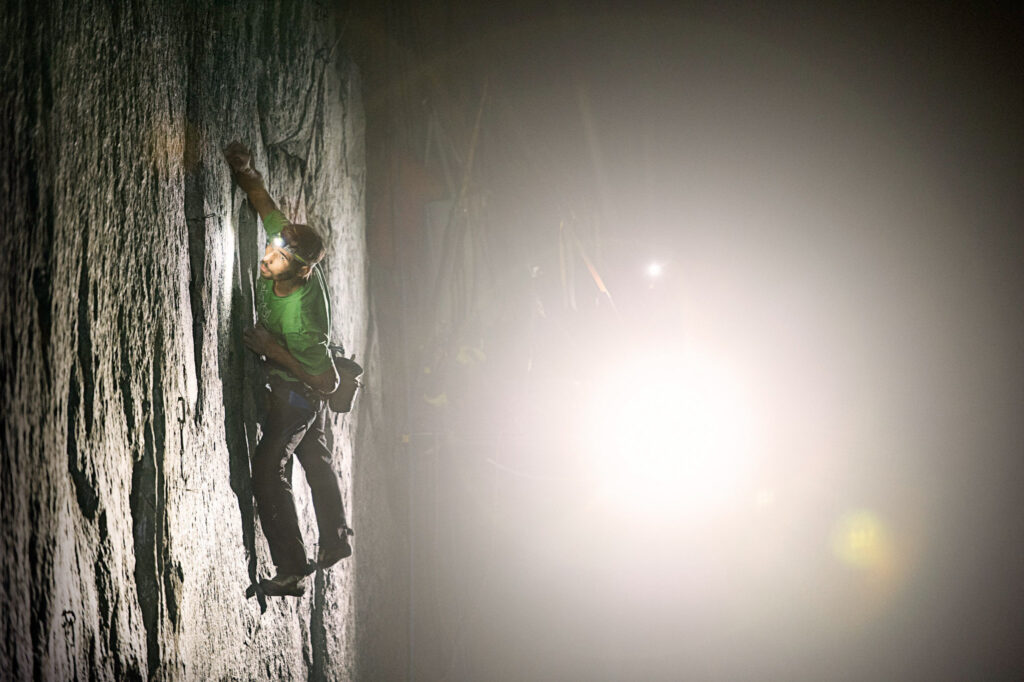
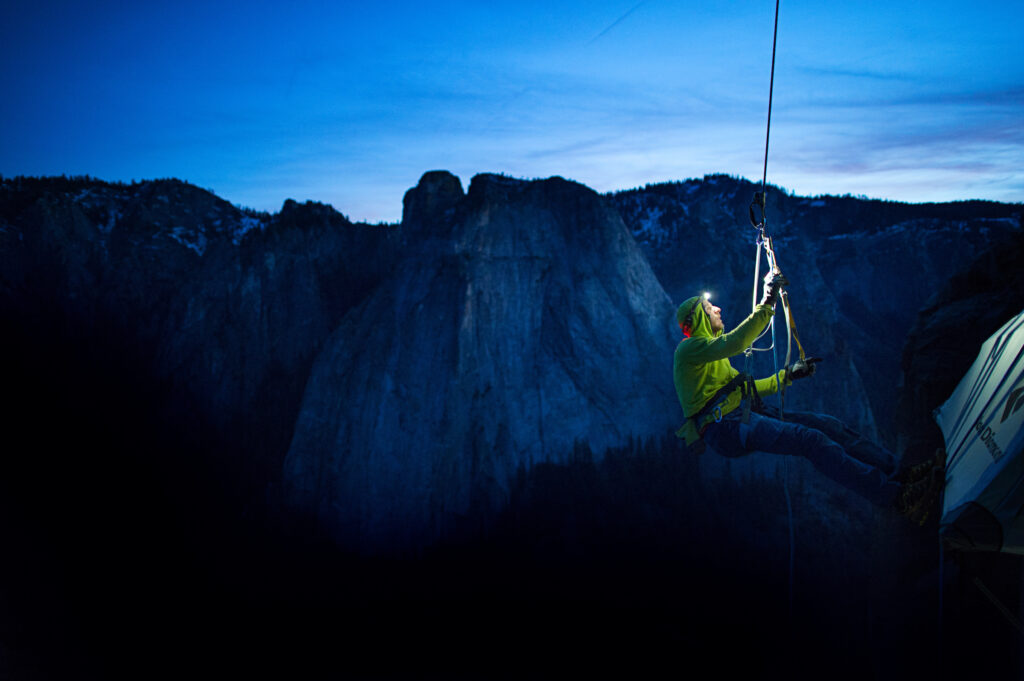
The reasons they climbed at night had to do with reducing hand sweat and therefore improving friction between their skin and the rock. The most difficult sections of the Dawn Wall contained very tiny hand holds—4mm edges of granite that most people would never be able to see let alone pull their body weight on. Climbing at night, in temperatures that were a few degrees cooler, made a big difference in their performance. Nighttime in January is as cold as this south-facing route was ever going to get.
I was part of a small production team documenting this climb for Sender Films. My longtime friend Brett Lowell was the DP. I was shooting some video but mostly I was there to capture the still photography. I’d fill up a memory card of photography and then Eric Sloan would run it down to the Valley floor, where Bligh Gillies would process it and help get these files out to the media. When I say, “Eric would run it down to the Valley floor” what I mean is that he was rappelling down or jugging up thousands of feet of free-hanging fixed ropes multiple times a day! A huge lift and impressive in its own right!
It was so surreal to know that the world was watching us via these visuals that we were capturing and dispatching out on the news wire each day. At the same time, we also felt very insulated from it all. After all, we were each just doing what we would’ve been doing anyway. A bunch of longtime friends, doing what we love: climbing hard, creating video and photography, and everyone pushing their limits in their own way.
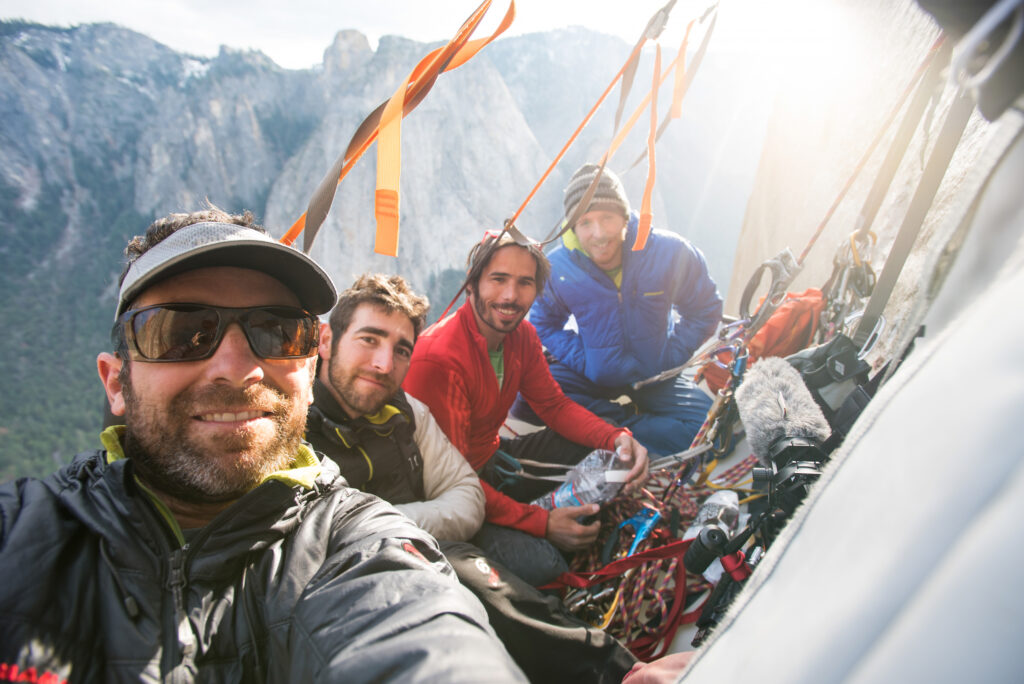
For me, my limits were pushed by the fact that Tommy and Kevin were climbing almost exclusively at night. When you’re a thousand feet up on El Captain with two of the best rock climbers on earth, it really shouldn’t be hard to make stunning pictures given the dramatic nature of your position high above the ground. But at night, you lose that advantage of seeing the dramatic background vistas, or the possibility of capturing a tiny figure in a massive vertical landscape.
This situation was also necessarily photojournalistic in nature. I was there to be a fly on the wall, to stay out of the way of the climbers so they could focus on giving this very difficult route their best efforts.
These constraints really pushed me and my creativity to capture interesting moments, dynamic body positions at peak action. The stakes felt high because I knew the photography I was creating was being seen by so many around the world. These pictures would be their first and maybe only introduction to rock climbing for many. As someone who has created a career documenting this sport, of course I wanted to show it in the best possibly light.
At night, that was challenging. The climber was often only lit by the reflected light of their own headlamp bouncing off the rock. I experimented with shooting wider and shooting tight, capturing facial expressions, and showing how tiny and difficult the climbing holds were.
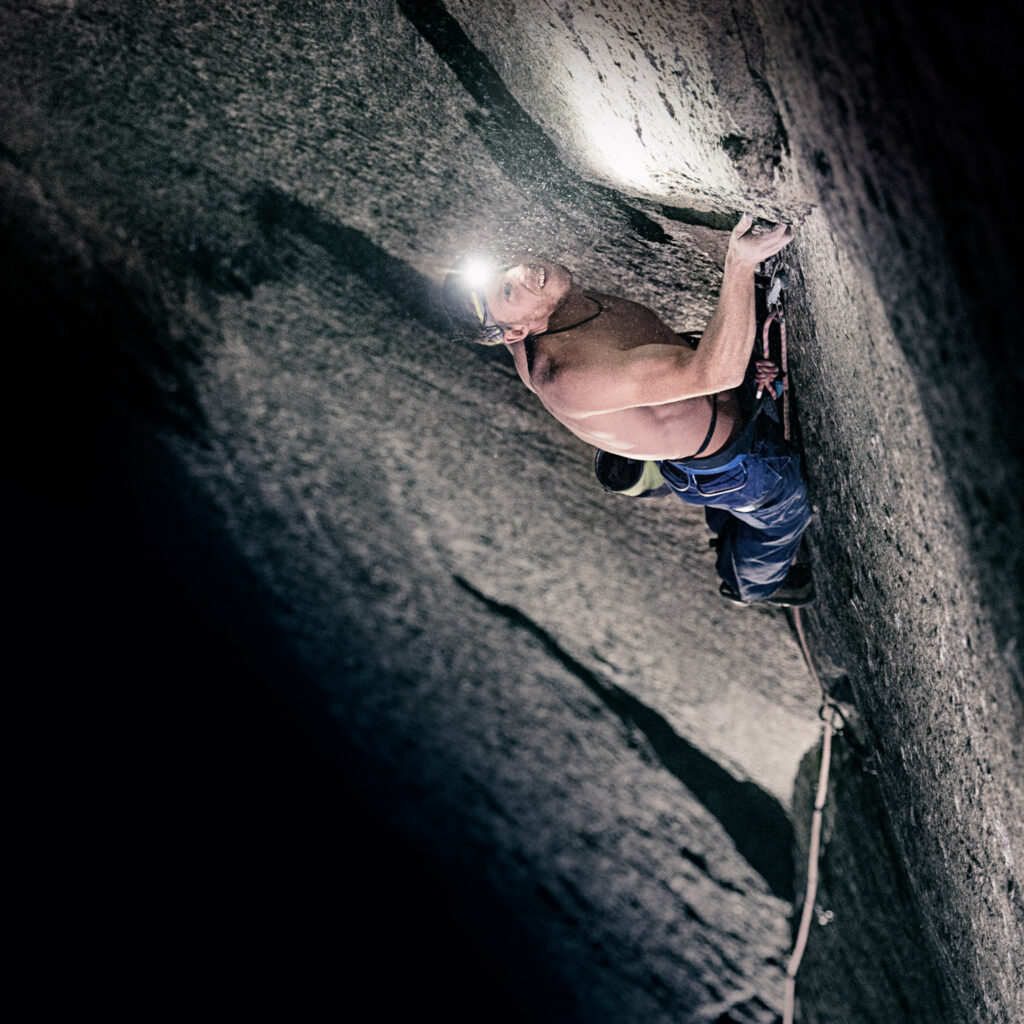
All photography lighting is designed to be used in horizontal spaces, so up in the vertical world, we had to get creative with our light sources and how we used them. Brett and I used some Light & Motion LED bike lights that I received through Rebecca Rusch, a professional biker and a very close friend. Given how hard it is to move around in the big-wall environment, we’d often pre-rig these lights to the cliff and hope that they’d be in the right place. We’d also rely on Tommy and Kevin to help us rig the lights, directing them from a distance about where to direct the lights. I’m not sure if Tommy and Kevin were ever given gaffing credits in the subsequent Dawn Wall film, but they certainly deserved it!
I like to call El Capitan my office, which I say knowing it’s a cheesy dad joke. But in reality, El Cap isn’t just my office, it’s also my laboratory where I learn, experiment, take chances, sometimes fail, and always learn new things. It was here on the Dawn Wall, in fact, during Tommy and Kevin’s first season together trying this rock climb in 2008, that I brought out the Nikon D90, the world’s first DSLR camera that could record video and stills in tandem. That camera changed the course of my career, away from strict still photography to focusing more on telling stories through video as a director.
Somehow, all of these threads—the idea of capturing rock climbing at night, and also working with cutting-edge cameras from Nikon—came together in a surprising way last year. I’m referring to a very cool opportunity I had to direct a film that would help launch the Z 9, Nikon’s flagship mirrorless camera.
News of a new Nikon camera reached me in a mysterious way, through winks and nods and lots of NDAs. Eventually, I was summoned to New York with my fellow Nikon Ambassadors for a top-secret meeting.
Mike Corrado, at Nikon USA, brought Jerry Ghionis, Rod Mar, Andy Hancock, Kristi Odom, and I into a conference room with shut blinds and top-level security. Meanwhile, Joe McNally and Mathew Jordan Smith dialed in on an encrypted line from abroad so they could attend the meeting virtually. Mike had a glint in his eye, like he had something he was dying to tell us. He opened up a presentation and briefed us in on the technical specs of a new camera, then unnamed, but which would later come to be called the Z 9.
All of us were in awe at the specs, from best-in-class 8K video resolution and internal ProRes recording to a still frame rate of 120 fps. We were impressed, but skeptical in a “this seems too good to be true” kind of way. After all, numbers on a screen mean nothing until you experience them in action.
After the presentation, Mike produced a few prototype Z 9s and let us play with them. Rod was interested in testing its 3D tracking, so we took turns running down a hall, weaving around desks, and remarking on how insane the auto-focus system was.
Jerry wanted to test its low-light sensitivity, so we went to an executive office and turned down the lights to check the autofocus in these conditions. Meanwhile, I was most interested in see if there was a lag in the LCD when shooting video, and I very pleased to find there was none.
This camera was not just passing all of our rudimentary tests, it was exceeding what we thought was possible in a camera. Everyone was pumped, to say the least!
The top-secret meeting ended as we were each given an assignment and a budget to shoot content that would support the Z 9 launch. My assignment was to capture something that would highlight the camera’s 8K video-recording capabilities. On the flight home, my mind was spinning. What was I going to shoot?
A few years earlier, I had shot a film to launch the Nikon Z 7 called “Morning.” It’s a story about a guy who gets in an epic bike ride before work. I thought, why not build on that idea and shoot a video called “Night”?
But shoot what at night?
I recalled my time on the Dawn Wall and remembered how climbers seek to escape the heat of the sun and climb during cooler conditions in order to improve their performance. It’s not just big-wall trad climbers like Tommy and Kevin. It’s also boulderers who head out at night, and set up pads and flood lights to work on their bouldering projects after hours. Some of these climbers might be choosing to climb at night because it’s cooler; but for others, it’s just a matter of balancing a full-time work schedule, and making time to squeeze in some time to do what they love.
The idea was now taking shape. I admit that this idea was also born out of a grim situation: the entire Lake Tahoe basin, where I live, was cloaked in thick smoke from the early days of the Caldor Fire. I figured shooting at night would also be a clever way to mask the haze. Ultimately, it was a moot point because the Caldor Fire grew to engulf 221,835 acres in the Eldorado National Forest, causing a massive evacuation of the entire town of South Lake Tahoe!
(As a tangent, I think there is an interesting, if really sad way that climate change plays a role in this story, from making El Capitan in January too hot for climbing during the day, to forcing us to flee our home because of a devastating wildfire. Looking at all the subtle ways climate change has influenced how we approach productions is perhaps a topic for another essay!)
We ultimately decided to stage our shoot around Boulder, Colorado. I worked with my friend and writer Andrew Bisharat to develop a short script that began with three female climbers having coffee at a coffee shop; their clothes chalky and dirty; their hands bloody and taped up. A goofy male barista asks them what they did last night, and the film would rewind time to previous night. It would begin with the climbers hiking out to the boulders in last light, and then having an epic night-time session climbing boulders.
This was a very similar story arc to “Morning,” and I was pleased to be continuing this theme for Nikon. It was also a cool conceit in that it allowed us to explore many different lighting conditions to showcase the Z 9’s performance.

We selected three strong women climbers to star in our film: Liz Ellison, Lena Palmer, and Shara Zaia. Our production crew included Dane Henry and Bligh Gillies on camera, Mike Hagadorn on gimbal and drone, Brett Wilhelm as our producer and camera tech, Rex Lint as our BTS camera and editor, and Miya Tsudome as production assistant. And of course, our client Mike Corrado was there as he wouldn’t miss this for the world; plus, he’s a big, intimidating guy and doubled as our security detail guarding our prototype cameras!
We were “shooting in the dark” in more than one way: we had no real idea just how well the Z 9 would perform with shooting an action sport at night. The first observation we all had was noticing how great the autofocus performed—way better than anything we could achieve with pulling focus manually. Even with a long lens, the camera’s autofocus system perfectly tracked the everything from the van driving down a windy road to the climbers’ eyes as they scaled the boulder. The camera’s focus just locked on and didn’t let go. Amazing!
We also noticed there was no more lag while monitoring the video. In older cameras, the delay between what was happening in front of the lens and what we were watching on the back of the cameras was a nuisance. But with the Z 9, that lag was all gone. And the resulting video files we recorded, even in low light, were super smooth and lacked noise. Amazing. It felt like the camera was doing all the work for us, and our job was just to focus on the creativity.
Even though my assignment was directing a video, I also used the Nikon Z 9 to capture a few still photos and was wowed by the autofocus sensitivity and the tonality of the image in such a low-light environment. Suddenly, I found myself thinking back to those fond memories of being on the Dawn Wall, shooting climbing in the middle of the night. I realized that a lot of the challenges I experienced with creating photographs and video on the Dawn Wall would’ve been easier to overcome had I had a Z 9 back then!
To me the Z 9 represents a true advance in technology. But having lived through these groundbreaking shifts, I’m always reminded of the importance of creativity, and the challenges around telling a compelling, interesting story—whether it happens at dawn or night.
Watch our BTS video on creating “NiGHT”
Watch “Morning”
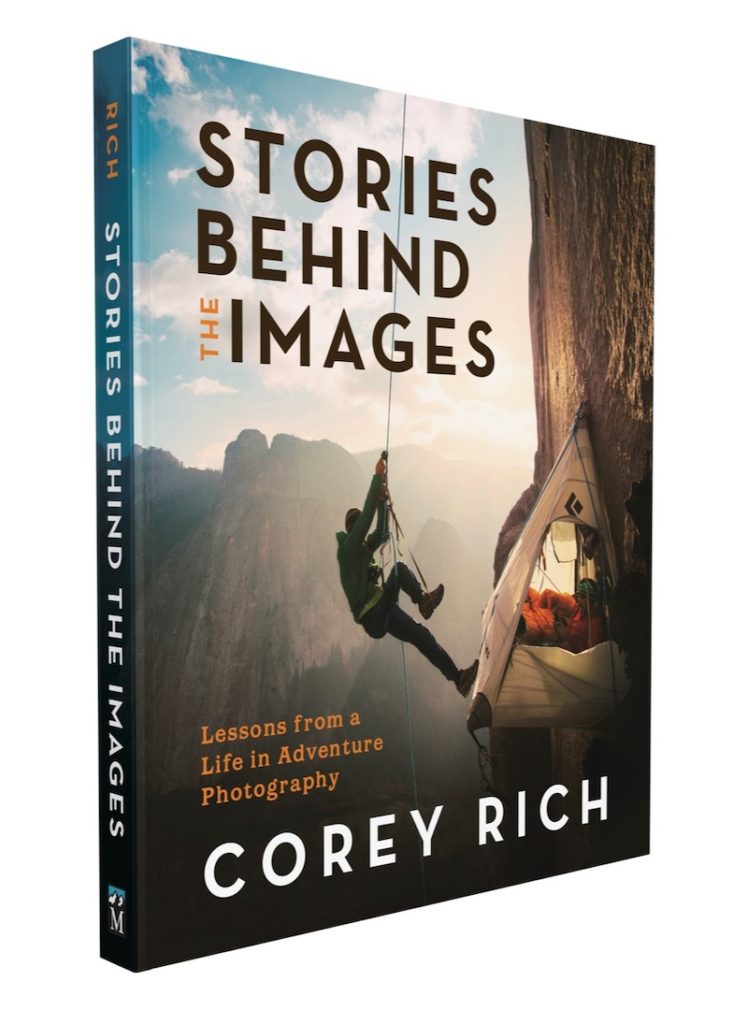
Get the book!
If you liked this essay, you’ll enjoy “STORIES BEHIND THE IMAGES” now in its second printing!
This compendium of images, captured over the course of my career as an adventure photographer and filmmaker, isn’t even a portfolio of my best work (though I am proud of many of these pictures). Instead, this book is about the amazing people, the incredible places, and the wonderful memories I have of creating these 56 pictures. I put this book together as a testament to what it means when you follow your passion. For me, that was being a 13 year old kid, picking up my dad’s camera for the first time and learning how to rock climb. What, where, and who came next … well, I wouldn’t trade that for the world.
https://storiesbehindtheimages.com
